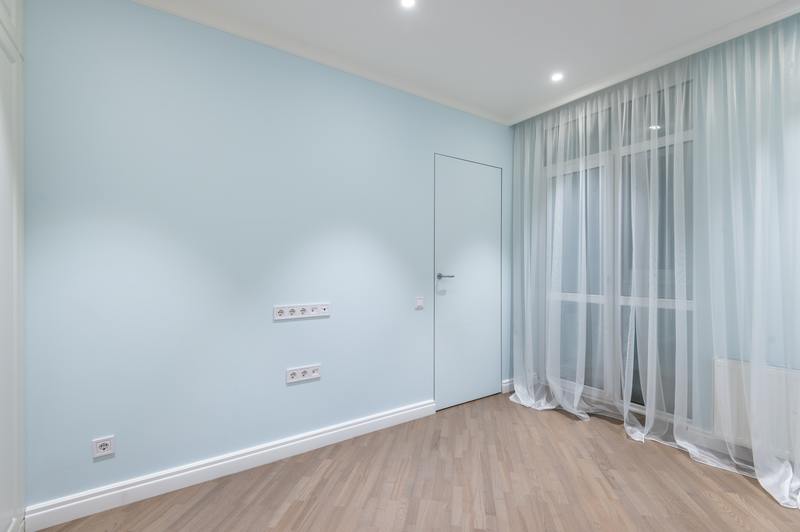Knowing how to fix water damaged plaster ceiling can help you protect your home from further water damage. The process is simple, as it involves assessing and fixing the cause of damage, removing the damaged part of the ceiling, filling up the holes and cracks, and then doing the finishing touches.
You can fix your plaster ceiling even without professional help. Continue reading to learn the correct methods and everything else there is to know about fixing your damaged plaster ceiling!

How To Repair Water Damaged Plaster Ceiling
Step #1. Find the cause of the water damage
The signs of water damage are pretty easy to spot, but the cause may be well out of sight. The first thing you should do before fixing your water-damaged ceiling is to find the cause of the damage itself. Any fix and patch you do will be rendered useless until you correct the source of the leak.
When it comes to water-damaged ceilings, you should look out for plumbing issues or a damaged roof. If the water damage is placed above the bathroom or the kitchen, then it Is most likely caused by leaking pipes. However, if the leak appeared after severe weather conditions and the droplets are brown, then your roof may be the issue.
It would be best to handle the water damage as quickly as possible. By acting swiftly, you can prevent your ceiling from taking more damage. In addition, you will also mitigate the chances of growing mold and mildew.
It would be best to call your plumber or repairman right away so that you can begin fixing your ceiling. You should check your insurance policy to see if accidental water damages are part of your insurance coverage. Consult with a lawyer afterwards to see your options before making claims.
Step #2. Clear the area
After fixing the leak source, you should then proceed to clear the area directly underneath the ceiling. Remove all that you can remove since the following steps will produce a lot of dust and cracked plaster.
Step #3. Prepare your equipment
Once the area is ready, you can now gather all the tools and items you need. For this project, you will need a putty and utility knife, a ladder, fiberglass mesh tape, joint compound, primer, mud pan, and sandpaper or a sanding block. It would be best if you also wore protective equipment such as glasses and masks.
Step #4. Eliminate the damaged plaster
During repair, the first thing you should do is remove all the water-damaged, browning, and crumbling ceiling plaster. You should also remove all the peeling paint. If the damaged area is larger than four inches, you can use a utility knife to cut it out as a square section.
Step #5. Fill up the holes
Before you proceed to fill up the holes, you should first push up the surroundings of the damaged area. If the ceiling moves, you should secure it to the lathe using drywall screws and plaster washers. In doing so, your ceiling will not sag any further and cause any damage to the repairs.
Now that the ceiling will no longer sag, you can proceed to fill up any small holes and cracks. Mix the joint compound into a mud pan and cover the small cracks using the putty knife. Place fiberglass mesh tape on the wet joint compound, press it and allow the compound to dry.
Afterward, apply one coat of primer and then another layer of joint compound. Make sure to use the compound beyond the tape so that it blends with the surrounding ceiling area.
Allow the joint compound to harden before adding as many layers as needed. It would be best to apply thin coats to speed up the drying time and avoid sanding too much.
The drying process can take hours. You can hasten the drying process by turning on fans and blowers and pointing it at the joint compound.
Step #6. Finishing up
After the joint compound dries, you can then begin the sanding process to even out the patched area with the rest of the ceiling. You should wear your protective glasses and a face mask before sanding using 150-grit sandpaper or a sanding block.
Do not worry if big chunks of compound fall off. You can retouch the area using joint compound by following the same process as before.
Once the plaster is even, use a clean damp cloth to wipe any dust on the ceiling. Afterward, prime the plaster using a stain-blocking primer or tinted shellac. Using these kinds of primer will prevent brown discolorations from showing through the paint job.
Afterward, you can then paint the area with any color of your choice. After allowing the paint to dry and cleaning up the area of all dust and debris, you can return all your items to their proper places.
Conclusion
Learning how to fix water damaged plaster ceiling can save you money by doing it yourself instead of hiring a professional. By following a six-step process, you can rest assured that your ceiling will not collapse and that the structural integrity of your home is preserved.
